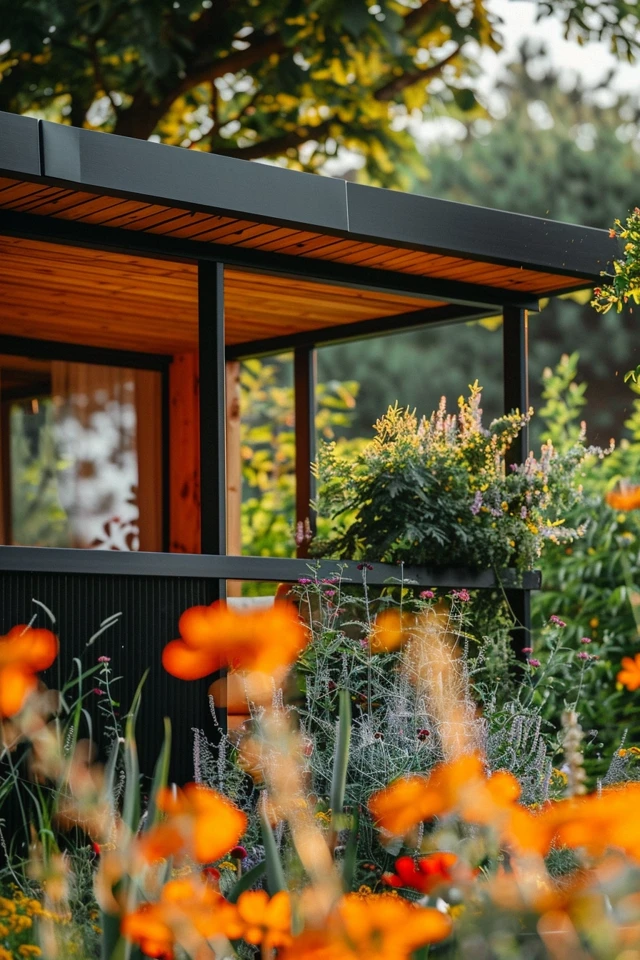When it comes to designing your chicken coop, the roof is an important element that not only provides protection from the elements but also adds style and functionality. There are numerous creative chicken coop roof ideas to consider for your flock. From choosing the best materials to implementing design features that promote ventilation and sustainability, here are some ideas to inspire your chicken coop roof project.
Key Takeaways:
- DIY chicken coop roof projects offer a cost-effective and rewarding option for chicken enthusiasts.
- Choosing the right materials, such as metal or asphalt shingles, can ensure a sturdy and durable roof.
- Design features like windows or vents can improve ventilation and temperature regulation inside the coop.
- Eco-friendly options include installing solar panels or incorporating a green roof with vegetation.
- Maintaining your chicken coop roof through regular cleaning and inspections can prevent leaks and damage.
Choosing the Right Materials for Your Chicken Coop Roof
The choice of materials for your chicken coop roof plays a crucial role in its durability and functionality. Different roofing materials have their own pros and cons, and it’s important to select the ones that best suit your climate and design preferences.

Pros and Cons of Different Roofing Materials
When considering chicken coop roof materials, it’s essential to weigh the advantages and disadvantages of each option. Some popular choices include:
- Tin Roof: Tin roofs are excellent for rainy climates due to their ability to handle moisture. Their smooth surface and fewer seams reduce the risk of leaks. When combined with a plywood base, tin roofs provide added protection.
- Plywood: Using plywood as a base for the roof provides stability and strength. It’s versatile and readily available, making it a cost-effective option. Additionally, plywood can be easily customized to fit the dimensions of your chicken coop.
- Insulated Roof: If you live in a cold climate, insulating the roof is crucial to keep your flock warm during winters. Insulated panels or foam boards can help retain heat and prevent drafts, ensuring the comfort of your chickens.
- Durable Materials: Snowy areas require roofing materials that can withstand heavy snow loads. Opt for durable materials such as metal or solid wood, and ensure the roof has a steep pitch to allow the snow to slide off easily.
- Sustainable Options: For environmentally-conscious chicken owners, there are sustainable roofing options available. Consider using materials like recycled metal or solar panels to create an eco-friendly chicken coop roof.
Maintaining Your Chicken Coop Roof
Once you have chosen the right materials for your chicken coop roof, proper maintenance is essential to ensure its longevity.
Regular cleaning and inspections can help identify and prevent potential leaks or damage.
In addition to regular maintenance, consider adding features to enhance your chicken coop roof. Proper ventilation is crucial for keeping the coop cool in warmer months and reducing moisture buildup. Windows or vents can provide fresh air circulation. Some chicken owners also incorporate greenery on the roof, such as potted plants or a living roof, which can help regulate temperature and enhance the coop’s aesthetics.
By choosing the right materials and implementing proper maintenance practices, you can create a sturdy, functional, and eco-friendly roof for your chicken coop.

Maintaining and Enhancing Your Chicken Coop Roof
Once you have built your chicken coop roof, it’s important to prioritize regular maintenance to ensure its longevity and functionality. Proper chicken coop roof maintenance involves preventing leaks and damage, cleaning and inspecting the roof regularly, and incorporating features for ventilation and temperature regulation.
Preventing leaks and damage should be a top priority for every chicken owner. Inspect the roof regularly for any signs of wear and tear, such as cracked or damaged shingles. Replace any damaged sections promptly to prevent water from seeping into the coop, which can lead to structural damage and health issues for your chickens.
In addition to regular inspections, cleaning the roof is essential. Remove any debris, such as leaves or branches, that may accumulate on the roof surface. This will help prevent clogs in gutters and downspouts, ensuring proper drainage during rainy seasons and preventing water from pooling on the roof.
Enhancing your chicken coop roof with features such as vents or windows can contribute to proper ventilation and temperature regulation inside the coop. Good airflow helps maintain optimal conditions for your flock, preventing heat stress in hot climates and reducing humidity and condensation in colder areas.
For those looking to create a sustainable and eco-friendly environment, consider enhancing your coop roof with vegetation or solar panels. Adding vegetation, such as a green roof or rooftop garden, not only provides insulation but also contributes to environmental benefits and aesthetics. Solar panels can help harness renewable energy to power lighting and other electrical needs, reducing your dependence on traditional energy sources.
By dedicating time to chicken coop roof maintenance and incorporating features for ventilation and temperature regulation, you can enhance the comfort and well-being of your flock while ensuring the longevity of your coop. Additionally, incorporating sustainable options like vegetation or solar panels can lead to a greener and more eco-friendly chicken keeping experience.


